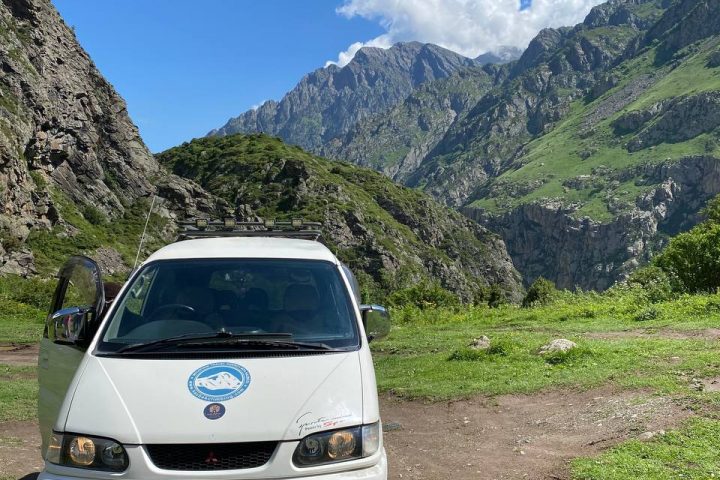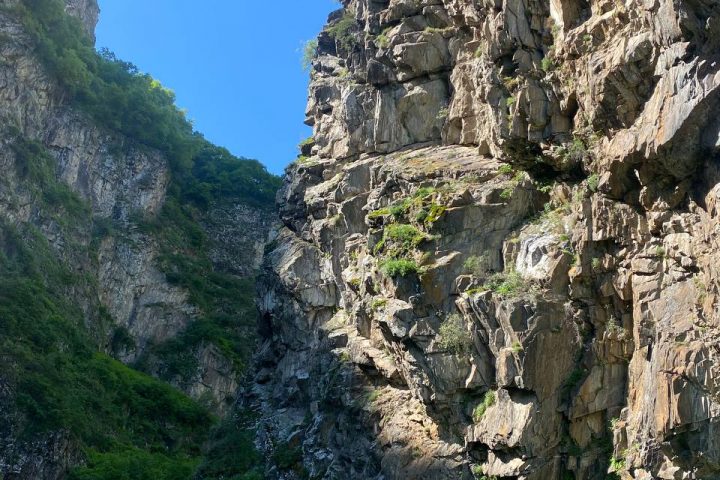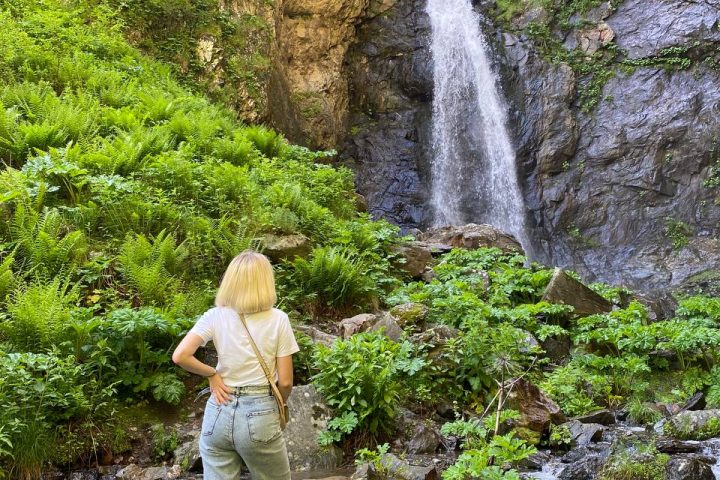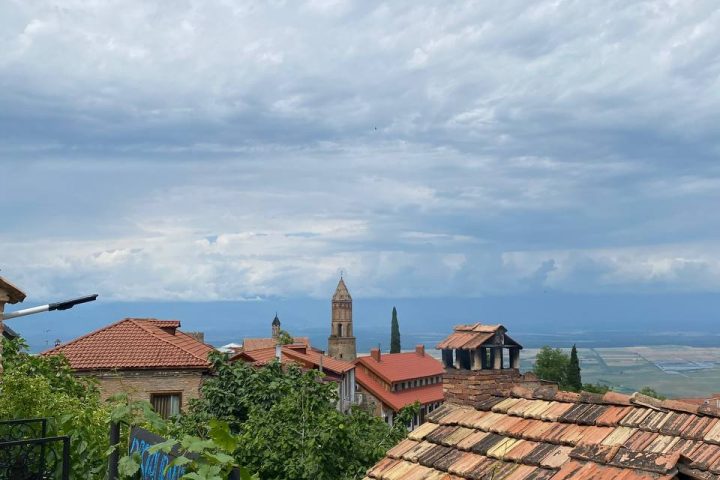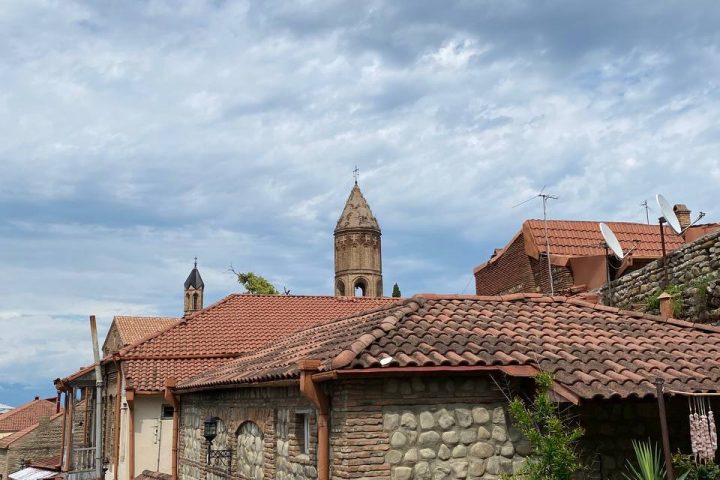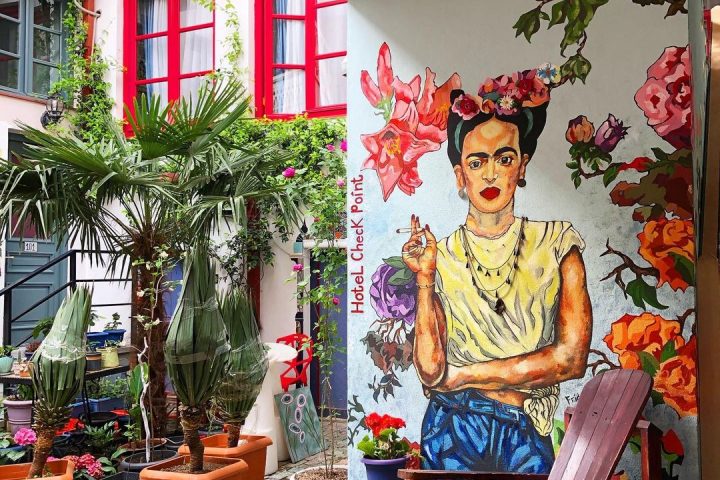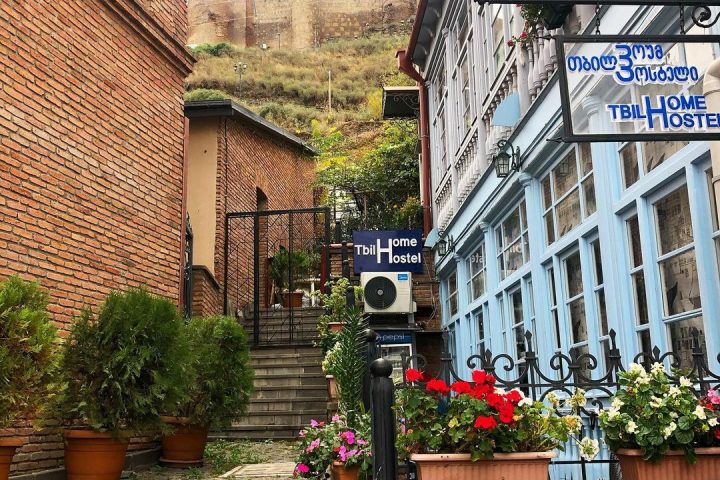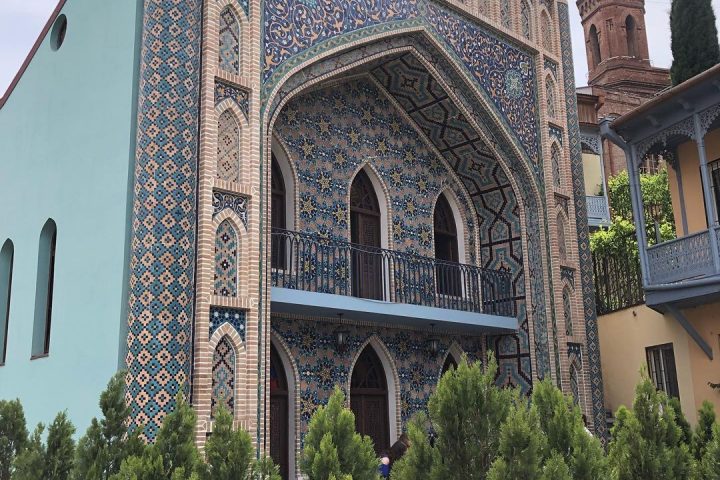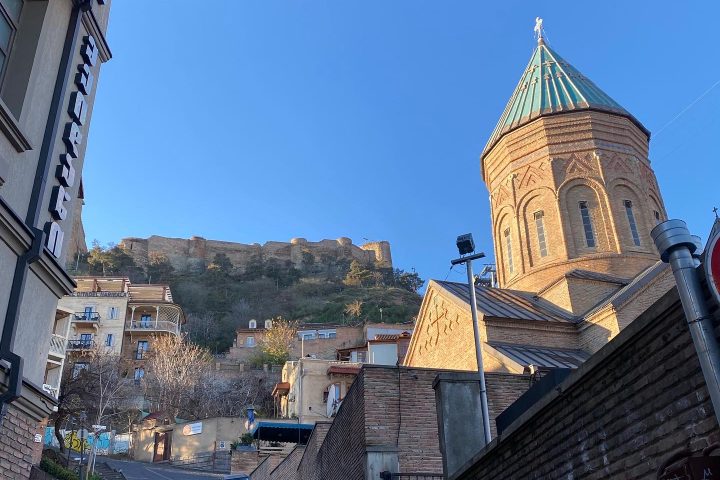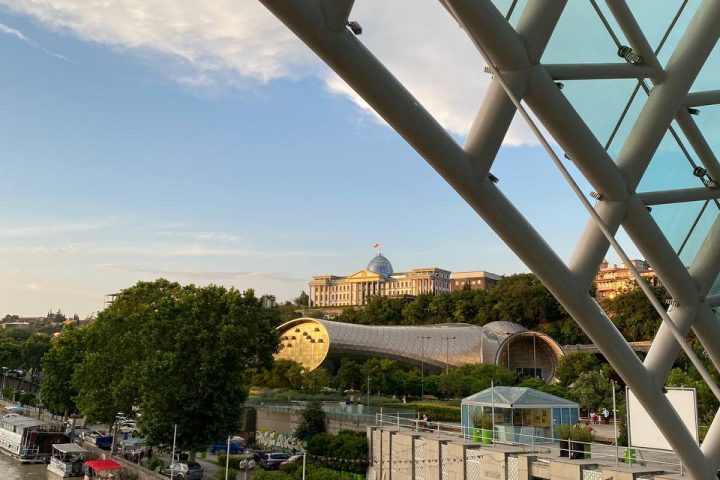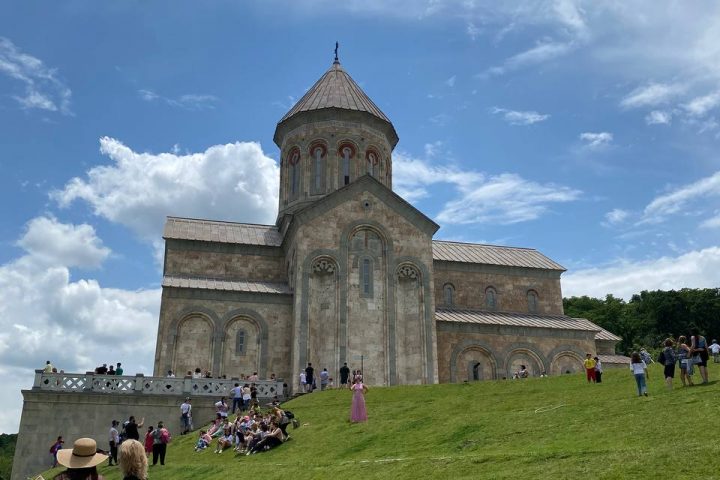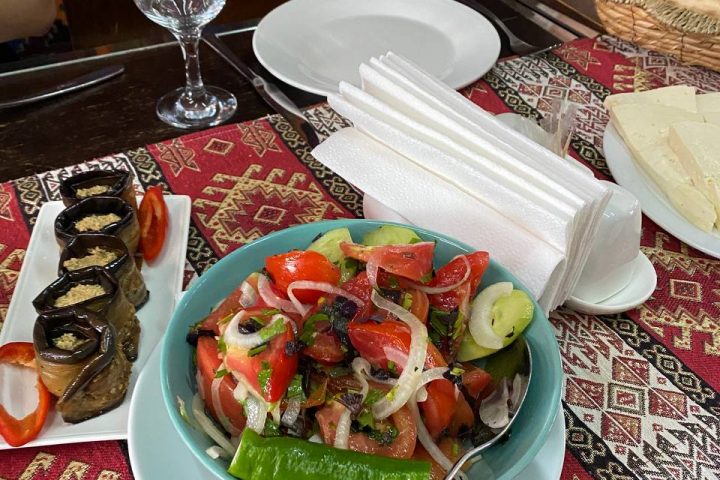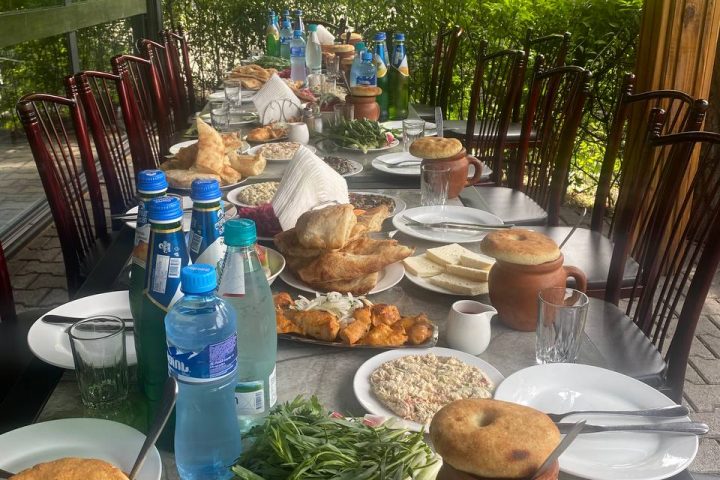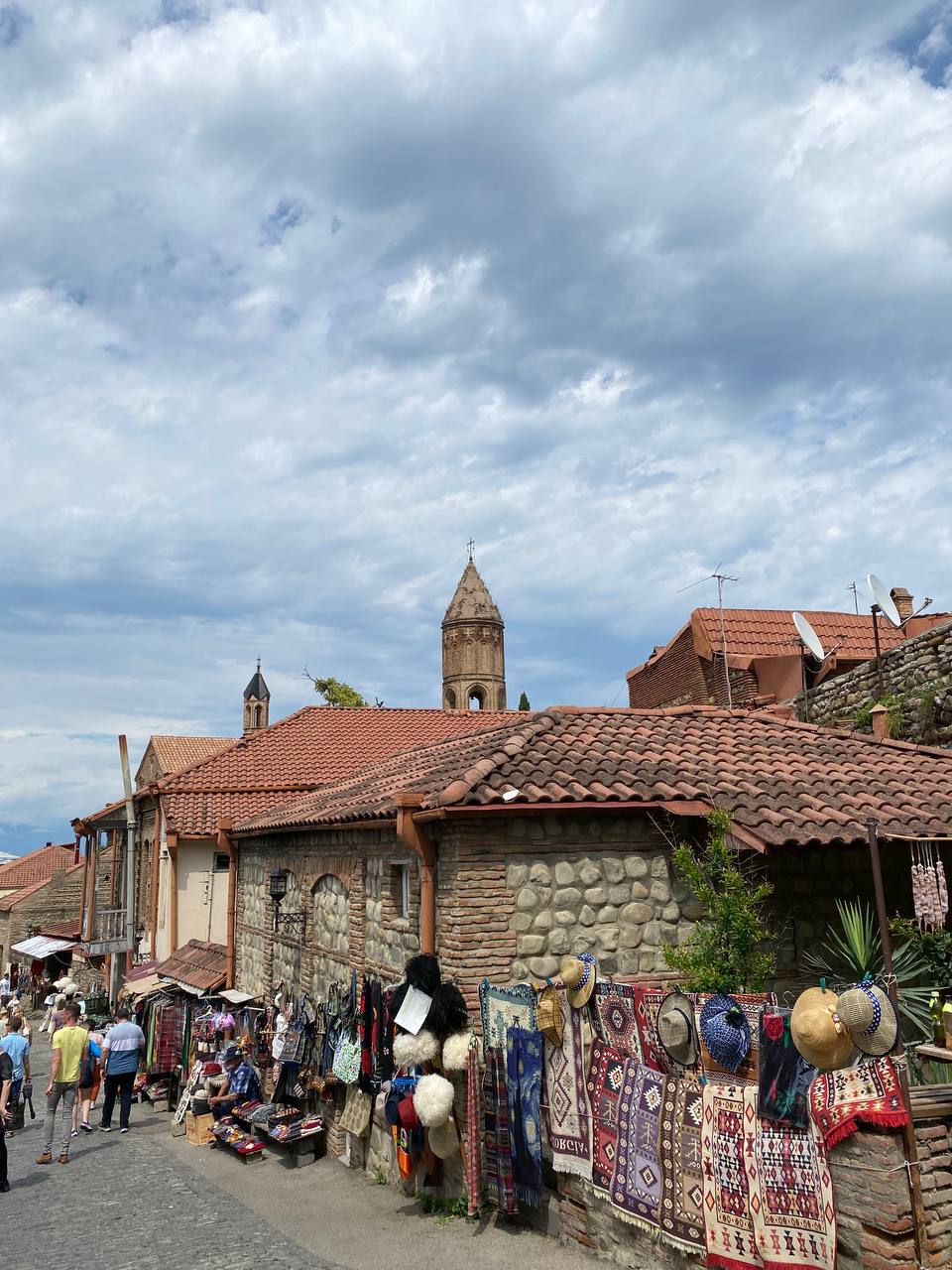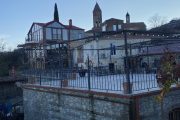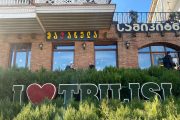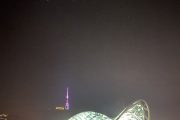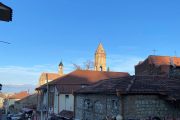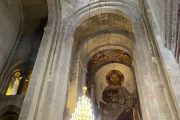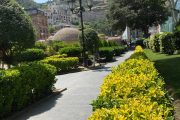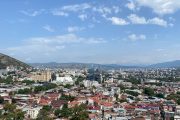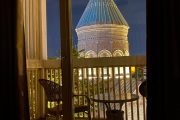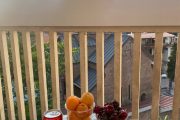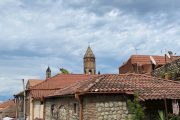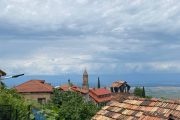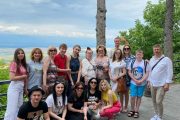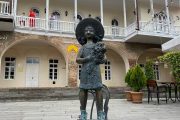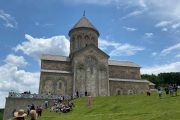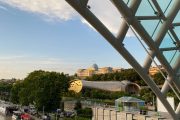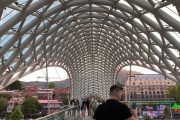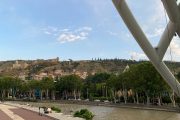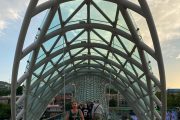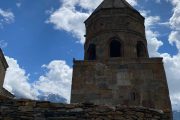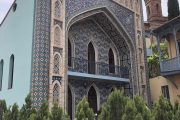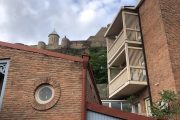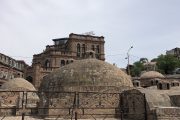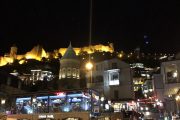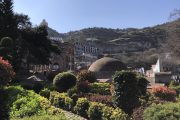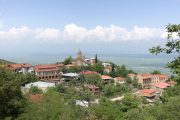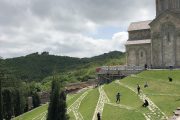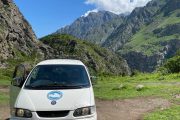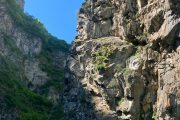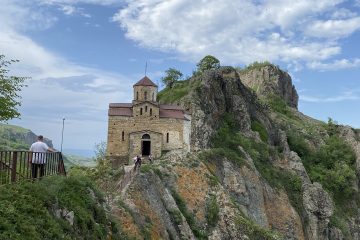Departure from Nalchik at night to Kazbegi through Vladikavkaz about 300 km (we pick up those who wish to join from Vladikavkaz along the way).
The border of the Russian Federation takes an indefinite time, passport control.
It is possible to purchase a tour with an independent arrival in Tbilisi with an additional charge for a meeting and transfer from Tbilisi airport.
Description
Day 1
Arrival in village Kazbegi at 08:00, breakfast (you need to have a snack with you).
9:30 | Departure by 4 wheel cars to Gveleti waterfall. It is located in the very north of Georgia near the small village of Gveleti. Streams fall from the deep gorge of the most famous mountain in Georgia — Kazbek. Its height is 25 m. The waterfall is located away from the highway connecting the Georgian villages of Gveleti and Gergeti.
12:30 | Jeep ride to Gergeti Triniti monastery.
The Church of the Holy Trinity in the village of Gergeti (in Georgian it sounds like Gergetis Tsminda Sameba) is one of the most picturesque in Georgia. It is such due to its location on an elevation among the mountains. Some tourists who have climbed up to the church may be lucky enough to see Kazbek, which offers a bewitching view in clear weather. The Church of the Holy Trinity is a cross-domed one — this is a rather rare type of building for the Kazbegi region, in fact, it is the only one preserved in this territory. The church is built of stone blocks, which gives it grandeur. Its walls are decorated with bas-reliefs with various ornaments. A metal door leads to the temple, it is quite dark inside — narrow windows do not let in much light, and there is no electricity here either.
14:00 | Lunch included
12:30 | Departure by jeeps to Truso Gorge.
Here, the Terek River originates from the Kazbek glaciers, the alpine valley is located just in the upper reaches of the wayward river. The picturesque Truso gorge is called the Narzanov Valley. There are many mineral springs here: both sulfuric, and calcium, and ferruginous, carbonated and simple. In total, there are about 60 springs gushing out of the ground.
18:00 | Arrival in Tbilisi at 21:00, accommodation in a hotel in the center of the Old City.
Free time.
The location of the hotel will allow you to get to various cafes, currency exchange offices and the main pedestrian street Shardeni, and the most popular square of Tbilisi — Freedom Square in 2 minutes.
All rooms are equipped with TVs, bath amenities. Free Wi-Fi is provided.
Day 2
09:00 | Breakfast at the hotel
10:00 | Departure for an excursion to Kakheti.
Departure to Kakhetia — a region of ancient traditions and the most delicious wines of Georgia. Kakheti is once an independent kingdom, now part of Georgia. The realm of endless vineyards and picturesque Tushino mountains, ancient traditions and mysterious dead cities. The kingdom of the most delicious Georgian wines and the calm sadness of ancient monasteries.
Bodbe — not far from Sighnaghi, in a picturesque area overlooking the Alazani Valley and, if you’re lucky, the snow-capped peaks of the Caucasus Range, the Bodbe Monastery is located. Saint Equal-to-the-Apostles Nina of Georgia, one of the most revered in Georgia, found her last refuge here. It contains the relics of the Enlightener of Georgia, Saint Equal-to-the-Apostles Nina, who died there in 347, at the age of 67, after 35 years of apostolic asceticism.
Sighnaghi — Sigakhi (Sighnaghi) is a small romantic town located on the slope of a cliff in the eastern part of the country of Georgia. Sighnaghi is translated from Turkish as «impregnable fortress», which characterizes the location of the city. The population is about 2000 inhabitants.
18:00 | Lunch in a Georgian family overlooking the Alazani Valley.
Return to Tbilisi. Free time.
Day 3
09:00 | Departure from the hotel with lugage.
Sightseeing tour of Old Tbilisi.
- Bridge of Peace—Standing out against the background of the old buildings of the historical center of Tbilisi, over the river Mtkvari (Kura) there is a unique glass Bridge of Peace, connecting the two banks like two eras. On the one hand, the architecture of the past, on the other, a modern city.
- Park Rike (Park of Europe) — is widely spread in the heart of the Old Town on the banks of the Kura River. It is an island of calm and serenity in the center of noisy Tbilisi, but at the same time you can not only walk slowly under the canopy of trees and enjoy the fresh air, greenery and silence.
- Let’s take the cable car up to the fortress Narikala(4th century AD) — an ancient citadel in the historical part of Tbilisi and one of the sights of the capital of Georgia. It is not exactly known when the stone fort was built on the hill, but in the 4th century, even before the foundation of the city, it existed under the name of Shuris-Tsikhe. It is believed that the Narikala fortress got its modern name under the Mongols. «Narin-Kala» means «small fortress». For many centuries, no one managed to take the fortress by battle. The powerful citadel rises on one of the spurs of Mount Mtatsminda — Narikala Hill, which is part of the Sololak Range. Translated from the Georgian language «Mtatsminda» means «holy mountain». The mountain rises above Tbilisi on the right bank of the Kura, almost in the center of the city. It dominates the entire urban development and is one of the symbols of Tbilisi.
- Waterfall in the Fig Gorge— the picturesque Legvtakhevi Gorge (Fig Gorge) is located in the very center of Tbilisi, in the Abanotubani district. The gorge begins at the Orbelian bath and ends with a waterfall, which forms the Tsavkisistskali river, which flows through the Botanical Garden. During the presidency of Mikhail Saakashvili, this place was equipped, footpaths were made here, and at present the gorge is one of the most visited places in the Georgian capital by tourists. Thousands of people come here every day.
- Sulfur baths— The sulfur baths of Tbilisi are one of the most important sights of the capital. In fact, these are ordinary public baths, their only feature is that the water in them comes from underground, from sulfur sources — warm and with a characteristic smell of hydrogen sulfide. By the way, rest and treatment in Georgia go hand in hand, many resorts have some kind of healing springs.
- Metekhi Temple — The hallmark of Tbilisi is the Metekhi Temple. It seems to grow out of a huge rock on the banks of the Kura. Spread over the river, the temple silently looks at Meidani Square and the city itself, at modern people and carefully stores somewhere in its very depths all those memories and pictures from the past that it had to endure.
- Mosque — The Shiite mosque, which was also commonly called the Blue or Tatar mosque, was built in 1524 on a high rocky bank of the Mtkvari River not far from the ancient Metekhi Church of the 13th century. The mosque was founded at the request of the famous Persian Shahinshah, poet and military leader from the Safavid dynasty Ismail I.
- Monument to Vakhtang Gorgasali— the monument to the founder of Tbilisi, Vakhtang Gorgasali, was erected relatively recently — in 1970. It blends so seamlessly into the landscape that it is impossible to imagine the city without it. The monument is set on a rock on the banks of the Kura River near the Metekhi temple. This neighborhood is not accidental — it was Vakhtang who first strengthened the faith of the Georgian people, built churches and monasteries. And now King Vakhtang stands and overshadows Tbilisi, the main square of the old city of Meydan, and protects this holy land from enemies.
- str. Shardeni — The street and the district got their names in honor of the French traveler Jean Chardin, who visited Tbilisi in the 19th century on a Catholic mission and colorfully described the city in his notes. Now the Shardeni district is a kind of analogue of the Moscow «Red October» — such a concentration of bars, clubs and other similar establishments is not found anywhere else in the city. But here, too, creative Georgian sculptors were noted — in general, extraordinary sculpture in the most unexpected places can be considered almost a hallmark of the center of Tbilisi.
- Rezo Gabriadze Puppet Theatre — The clock tower near the Puppet Theater in Tbilisi appeared only a year and a half ago, but it seems that it has always been there, it blended very organically and unmistakably into the architecture of the old street.
Lunch (included)
Evening departure to Nalchik and/or airport.
| PRICE | 18’000 rubles per person | ||||||
| DURATION | 3 days / 2 night | ||||||
| AMOUNT IN THE GROUP | from 6 pax | ||||||
| INCLUDED IN THE PRICE |
|
||||||
| ADDITIONALLY PAID |
|
||||||
| You must have all needed documents — passport and visa on necessity. Important to know! If weather conditions are unfavorable for the tour, then changes to the planned route are possible, including the day and time of departure. |
|||||||
Booking
SERVICES
| Travel by minibus tour class | |
| Accommodation in the center of Tbilisi (in the Old Town) hotel 3* for 2 nights | |
| Breakfasts | |
| Lunch in Tbilisi | |
| Cableway in Tbilisi | |
| Excursion service according to the tour program with a qualified guide | |
| Tbilisi sightseeing tour | |
| Jeep tour in Kazbegi | |
| Trip to Kazbegi, Mtskheta, Jvari Monastery, Kakhetia | |
| COST | 18 000 rubles. |
ADDITIONAL EXPENSES:
- lunches and dinners
- Personal expenses


 +7 928 691 44 05
+7 928 691 44 05 
 Russia, KBR, city Nalchik
Russia, KBR, city Nalchik




